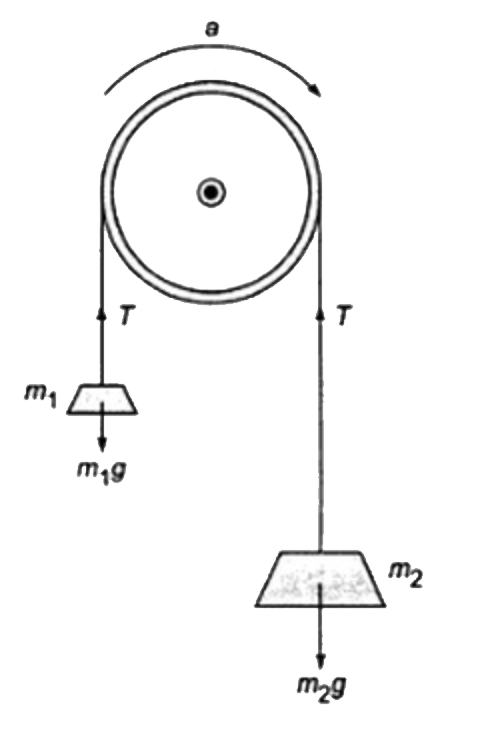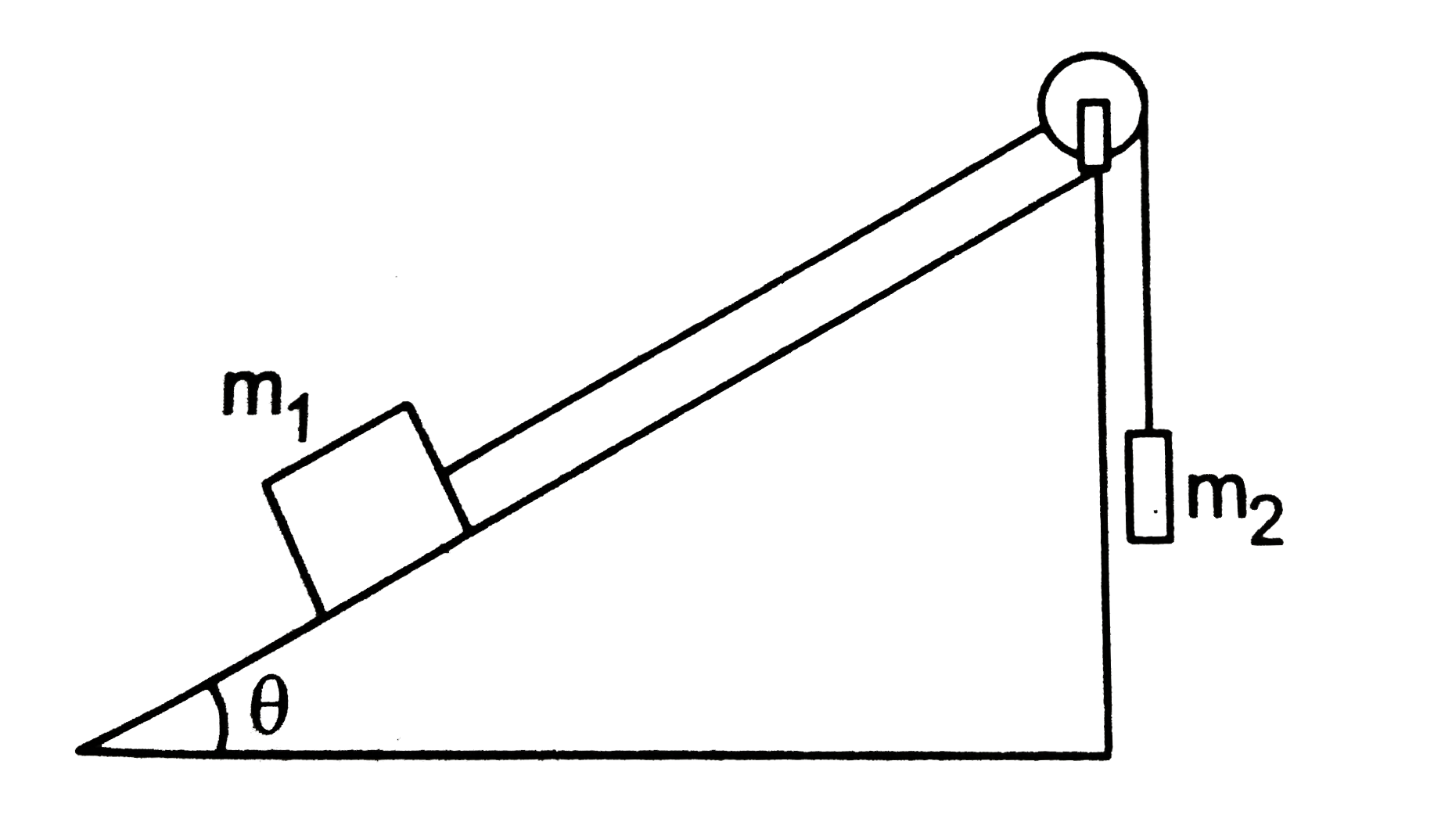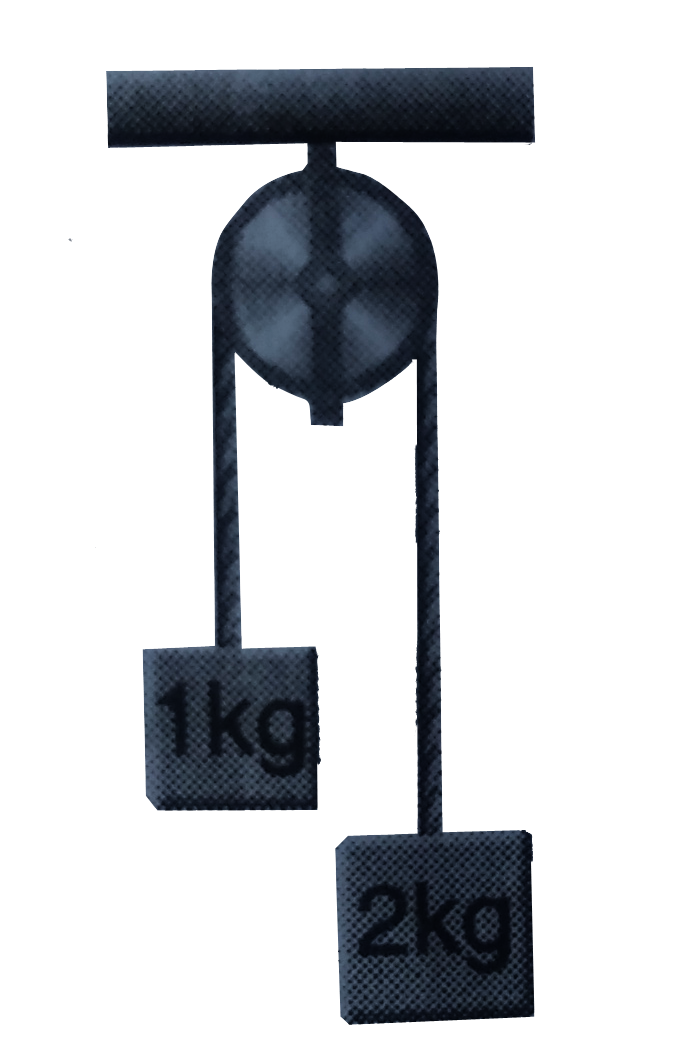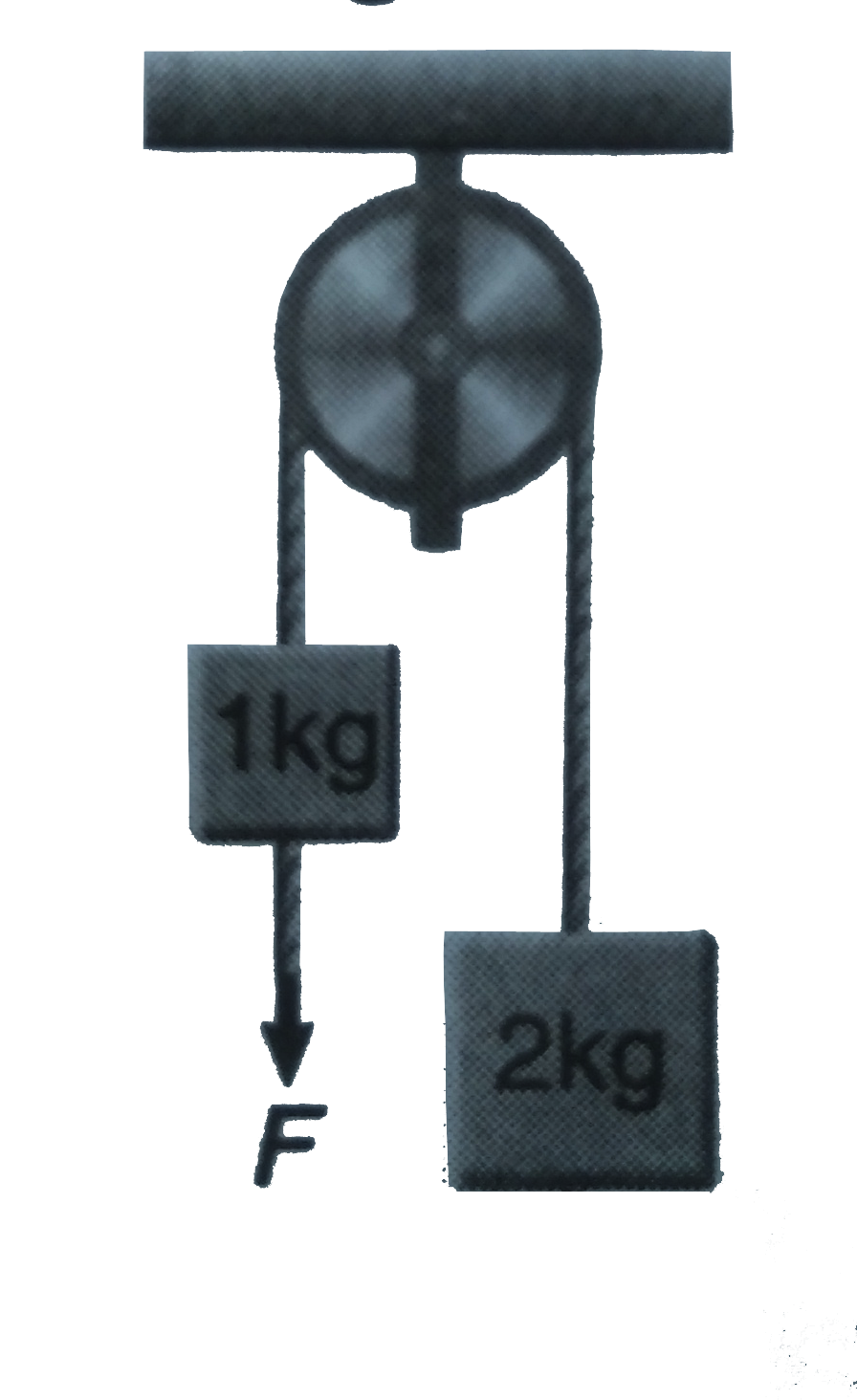In a simple Atwood's machine, two unequal masses m1=5kg , m2=2kg are connected by a string going over a clamped light smooth pulley. Now a constant force F = 1 N is applied on each mass in vertically downward direction. The ratio of acceleration of either block before and after applying the force will be
717
25
1
34
To solve the problem, we need to analyze the motion of the two masses in the Atwood's machine both before and after the application of the force. Let's denote the two masses as m1=5kg and m2=2kg.
Step 1: Calculate the acceleration before applying the force
Before applying the force, the only forces acting on the masses are their weights and the tension in the string. The net force acting on the system can be calculated as follows:
1. The weight of mass m1 is W1=m1g=5×9.8=49N.
2. The weight of mass m2 is W2=m2g=2×9.8=19.6N.
The net force Fnet acting on the system is the difference in weights:
Fnet=W1−W2=49N−19.6N=29.4N
The total mass of the system is:
mtotal=m1+m2=5kg+2kg=7kg
Using Newton's second law, the acceleration a1 before applying the force is:
a1=Fnetmtotal=29.4N7kg=4.2m/s2
Step 2: Calculate the acceleration after applying the force
After applying the downward force F=1N on both masses, the new weights become:
1. The new weight of mass m1 is W′1=W1+F=49N+1N=50N.
2. The new weight of mass m2 is W′2=W2+F=19.6N+1N=20.6N.
The new net force F′net is:
F′net=W′1−W′2=50N−20.6N=29.4N
The total mass remains the same:
mtotal=7kg
Using Newton's second law again, the new acceleration a2 after applying the force is:
a2=F′netmtotal=29.4N7kg=4.2m/s2
Step 3: Calculate the ratio of accelerations
Now we can find the ratio of the accelerations before and after applying the force:
Ratio=a1a2=4.2m/s24.2m/s2=1
Final Answer
The ratio of the acceleration of either block before and after applying the force is 1.
Before applying the force, the only forces acting on the masses are their weights and the tension in the string. The net force acting on the system can be calculated as follows:
2. The weight of mass m2 is W2=m2g=2×9.8=19.6N.
Fnet=W1−W2=49N−19.6N=29.4N
mtotal=m1+m2=5kg+2kg=7kg
a1=Fnetmtotal=29.4N7kg=4.2m/s2
After applying the downward force F=1N on both masses, the new weights become:
2. The new weight of mass m2 is W′2=W2+F=19.6N+1N=20.6N.
F′net=W′1−W′2=50N−20.6N=29.4N
mtotal=7kg
a2=F′netmtotal=29.4N7kg=4.2m/s2
Now we can find the ratio of the accelerations before and after applying the force:
Ratio=a1a2=4.2m/s24.2m/s2=1
The ratio of the acceleration of either block before and after applying the force is 1.
Topper's Solved these Questions
Similar Questions
In a simple At wood machine, two unequal masses m1andm2 are connected by string going over a clamped light smooth pulley . IN a typical arrangement m1=300g and m2=600g. The system is released from rest. A. Find the distance travelled byi the first block in the first two seconds. b. Find the tension in the string. c. Findthe force exerted by the clamp on teh pulley.

View SolutionIn a simple Atwood machine, two unequal masses m1andm2 are connected by string going over a clamped light smooth pulley . In a typical arrangement m1=300g and m2=600g. The system is released from rest. (a). Find the distance traveled by the first block in the first two seconds. (b). Find the tension in the string. (c). Find the force exerted by the clamp on the pulley.

View Solution
Knowledge Check
A constant force of 5 N is applied on a block of mass 20 kg for a distance 2 0 m. The kinetic energy acquired by the block is
A20 JB15 JC10 JD5 JTwo blocks of masses m1=4kg and m2=2kg are connected to the ends of a string which passes over a massless, frictionless pulley. The total downwards thrust on the pulley is nearly
 A27 NB54 NC0.8 NDZero
A27 NB54 NC0.8 NDZeroTwo bodies of masses m1andm2 are connected by a light string going over a smooth lilght pulley at the end of an incline. The mass1 lies on the incline m2 hangs vertically. The system is t rest. Find the angle of the incline and the fore exerted by the incline on the body of mass m_1.
 Asinθ=2m2m1 , N=m1gcosθBsinθ=m2m1 , N=m1gcosθCsinθ=m2m1 , N=m1gsinθDsinθ=m2m1 , N=4m1gcosθ
Asinθ=2m2m1 , N=m1gcosθBsinθ=m2m1 , N=m1gcosθCsinθ=m2m1 , N=m1gsinθDsinθ=m2m1 , N=4m1gcosθ
Two unequal masses of 1kg and 2kg are connected by a string going over a clamed light smooth pulley as shown in figure . The system is released from rest .The larger mass is stopped for a moment 1.0s after the system is set in motion.Find the time elapsed before the string is tight again.

View SolutionTwo unequal masses of 1kg and 2kg are connected by an inextensible light string passing over a smooth pulley as shown in figure. A force F=20N is applied on 1kg block find the acceleration of either block (g=10m/s2).

View SolutionThree blocks of masses m1=10kg,m2=20kg,m3=30kg are connected by strings on smooth horizontal surface and pulled by a force of 60 N. Find the acceleration of the system and tensions in the string.

View SolutionTwo bodies of masses 2kg and 3kg are connected by a very light string passed over a clamped light smooth pulley. If the system is released from rest, find the acceleration of the two masses and the tension in the string (g=10ms−2)
View SolutionTwo blocks A and B of masses m and M are attached with ideal string and pulley, and placed on smooth horizontal surface. Force F is applied horizontally as shown in figure. Find the ratio of the acceleration of A to that of B.

View Solution

